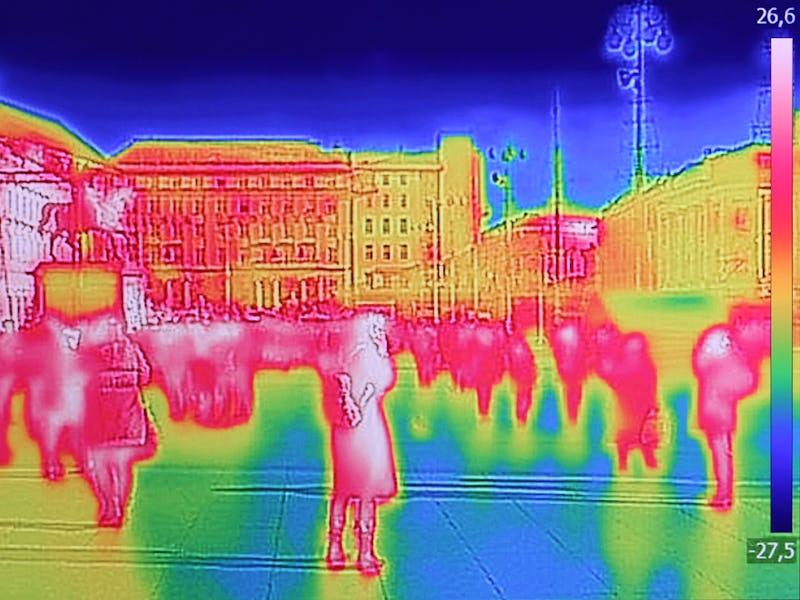A new device allows anyone to become literally invisible at night
A newly developed wearable device can camouflage your body heat.

If you happen to be a secret agent and want to make sure you can sneak around at night without being detected, or if you're just deeply concerned about your personal privacy, some new camouflage research might be of interest to you. Researchers at the University of California, San Diego have created a wearable device that can hide someone from heat-detecting sensors such as the kind you find in night vision goggles.
The research was published in the journal Advanced Functional Materials on January 29, and a new video shows it effectively preventing someone wearing the device from being detected by a thermal sensor.
The researchers claim the device works even when ambient temperature changes, so it doesn't matter what the weather is like. It cools down or heats up based on the outside temperature. The researchers write that it can go anywhere between 50 and 100.5 degrees Fahrenheit in under a minute.
"To build the device, the team turned to a phase-changing material that’s similar to wax but with more complex properties. The melting point of the material is 30 degrees Celsius (roughly 86 degrees F), the same temperature as the surface temperature of human skin," a UCSD press release explains. "If the temperature on the outside of the device is higher than that, the material will melt and stabilize, insulating the wearer; if colder, it will slowly solidify, still acting as an insulating layer."
The device contains thermoelectric alloys, which use electricity to alter temperature. It's powered by a battery, and it can be controlled wirelessly. The researchers claim that this is the first device that can camouflage someone from thermal sensors that can adapt to ambient temperature changes.
Looking at the video, you might be thinking this device is only going to prevent someone from seeing your wrist. But that's because this is just a proof of concept. The researchers are planning to make a jacket that utilizes this technology next. With the materials they used for the proof of concept, the jacket would weigh over 4 pounds, so they're currently looking for lighter material they could use.
As we reported in December, researchers at the University of Wisconsin, Madison were recently able to develop a coating that can prevent you from being seen by thermal sensors. That coating is made of samarium nickel oxide, and it allows you to control how much thermal radiation is emitted.
Most of us aren't in need of wearable technology that can hide us from night vision, but something like this might be useful for the military. Being able to sneak around at night without being detected could be a major strategic advantage.
The Inverse analysis
We can imagine that certain individuals who are passionate about privacy rights might want an outfit that can prevent them from being detected by thermal imaging that is often used by police departments for surveillance. We can also imagine people might use this technology for more nefarious purposes, like evading thermal sensors sometimes found in home and business security systems. It'll be interesting to see how this technology is applied and what it is able to hide as these researchers further develop it.
Abstract: Thermal cloaking and camouflage have attracted increasing attention with the progress of infrared surveillance technologies. Previous studies have been mainly focused on emissivity manipulation or using sophisticated thermal metamaterials. However, emissivity control is only applicable for objects that are warmer than the environment and lower emissivity is usually accompanied with high reflectance of the surrounding thermal signals if they have nonuniform temperature. Metamaterial‐based thermal camouflage holds great promise but their applications on human subjects are yet to be realized. Direct temperature control represents a more desirable strategy to realize dynamically adjustable camouflage within a wide ambient temperature range, but a wearable, portable, and adjustable thermo‐regulation system that is suitable for human subjects has not been developed. This work demonstrates a wearable and adaptive infrared camouflage device responding to the background temperature change based on the thermoelectric cooling and heating effect. The flexible thermoelectric device can realize the infrared camouflage effect to effectively shield the metabolic heat from skin within a wide range of background temperature: 7 °C below and 15 °C above the ambient temperature, showing promise for a broad range of potential applications, such as security, counter‐surveillance, and adaptive heat shielding and thermal control.